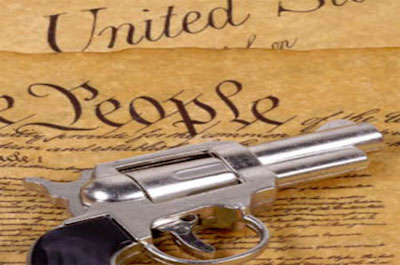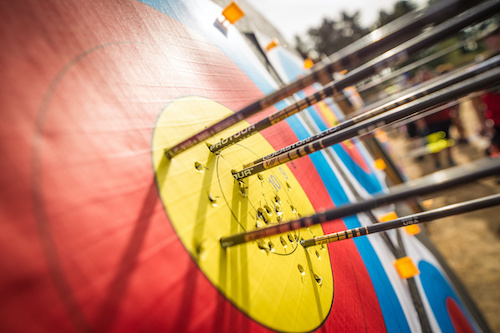What Not To Do With Guns
 In reviewing data on gun violence, there are facts and then there are emotional responses divorced from facts. Often the gun debate is driven by emotional response to stop the violence and logical assumptions that don’t match the facts just as more guns produces more violence. But alas, real life shows this not to be case. Since the 1990’s, gun violence has dropped while the number of guns purchased in the United States has doubled. While there are many factors why crime rate has dropped, the case that more guns equal more violence doesn’t match the reality and can’t be the main rationale for gun control.
In reviewing data on gun violence, there are facts and then there are emotional responses divorced from facts. Often the gun debate is driven by emotional response to stop the violence and logical assumptions that don’t match the facts just as more guns produces more violence. But alas, real life shows this not to be case. Since the 1990’s, gun violence has dropped while the number of guns purchased in the United States has doubled. While there are many factors why crime rate has dropped, the case that more guns equal more violence doesn’t match the reality and can’t be the main rationale for gun control.
A Harvard Study reviewing murder and suicide rates internationally concluded, “The burden of proof rests on the proponents of the more guns equal more death and fewer guns equal less death mantra, especially since they argue public policy ought to be based on that mantra. To bear that burden would at the very least require showing that a large number of nations with more guns have more death and that nations that have imposed stringent gun controls have achieved substantial reductions in criminal violence (or suicide). But those correlations are not observed when a large number of nations are compared across the world.” 1 The author concluded that to base policy on the idea that more guns means more violence, you need to prove that indeed, more guns equal more violence.
Leah Libresco, a former research for the liberal 538, explained about her research, “My colleagues and I at FiveThirtyEight spent three months analyzing all 33,000 lives ended by guns each year in the United States, and I wound up frustrated in a whole new way. We looked at what interventions might have saved those people, and the case for the policies I’d lobbied for crumbled when I examined the evidence.”2 Leah Libresco reviewed the data and noted that much of what we are told about gun control is totally wrong and the data supports the gun rights advocate when it comes to opposing new laws to restrict gun rights. Libresco noted, “I researched the strictly tightened gun laws in Britain and Australia and concluded that they didn’t prove much about what America’s policy should be. Neither nation experienced drops in mass shootings or other gun related-crime that could be attributed to their buybacks and bans. Mass shootings were too rare in Australia for their absence after the buyback program to be clear evidence of progress. And in both Australia and Britain, the gun restrictions had an ambiguous effect on other gun-related crimes or deaths.”3 Her research mimics what Harvard study showed as well that gun control does not decrease violent death or even suicide which brings up another point. Two thirds of gun deaths are suicide and there is very little that any gun control laws can do to prevent those deaths.
Libresco noted, “Two-thirds of gun deaths in the United States every year are suicides. Almost no proposed restriction would make it meaningfully harder for people with guns on hand to use them. I couldn’t even answer my most desperate question: if I had a friend who had guns in his home and a history of suicide attempts, was there anything I could do that would help?...However, the next-largest set of gun deaths — 1 in 5 — were young men aged 15 to 34, killed in homicides. These men were most likely to die at the hands of other young men, often related to gang loyalties or other street violence. And the last notable group of similar deaths was the 1,700 women murdered per year, usually as the result of domestic violence. Far more people were killed in these ways than in mass-shooting incidents, but few of the popularly floated policies were tailored to serve them.”4
Libresco’s point is that we have very good idea of who are most likely to commit violence and why; her suggestion is to find policies that is geared to those populations. Her conclusion, “I found the most hope in more narrowly tailored interventions. Potential suicide victims, women menaced by their abusive partners and kids swept up in street vendettas are all in danger from guns, but they each require different protections… Older men, who make up the largest share of gun suicides, need better access to people who could care for them and get them help. Women endangered by specific men need to be prioritized by police, who can enforce restraining orders prohibiting these men from buying and owning guns. Younger men at risk of violence need to be identified before they take a life or lose theirs and to be connected to mentors who can help them de-escalate conflicts.” 5
Libresco notes one solution in dealing with gangs, “Even the most data-driven practices, such as New Orleans’ plan to identify gang members for intervention based on previous arrests and weapons seizures, wind up more personal than most policies floated. The young men at risk can be identified by an algorithm, but they have to be disarmed one by one, personally — not en masse as though they were all interchangeable. A reduction in gun deaths is most likely to come from finding smaller chances for victories and expanding those solutions as much as possible.”6 Libresco’s point is that there is no magic bullet to prevent mass shootings as recently happened in Las Vegas. Using data analysis and knowing the neighborhood, good police tactics, can reduce violence within those communities but that doesn’t match the narrative on the need for more restrictive gun control.
More recently, Marco Rubio noted, “None of the major shootings that have occurred in this country over the last few months or years that have outraged us, would gun laws have prevented them.” And when the Washington Post fact checked this, they found Rubio was correct.7 What we are seeing is a rush to pass laws that will have little or no impact on preventing violence and while time is being wasted on non-solutions, real solutions are being ignored.








